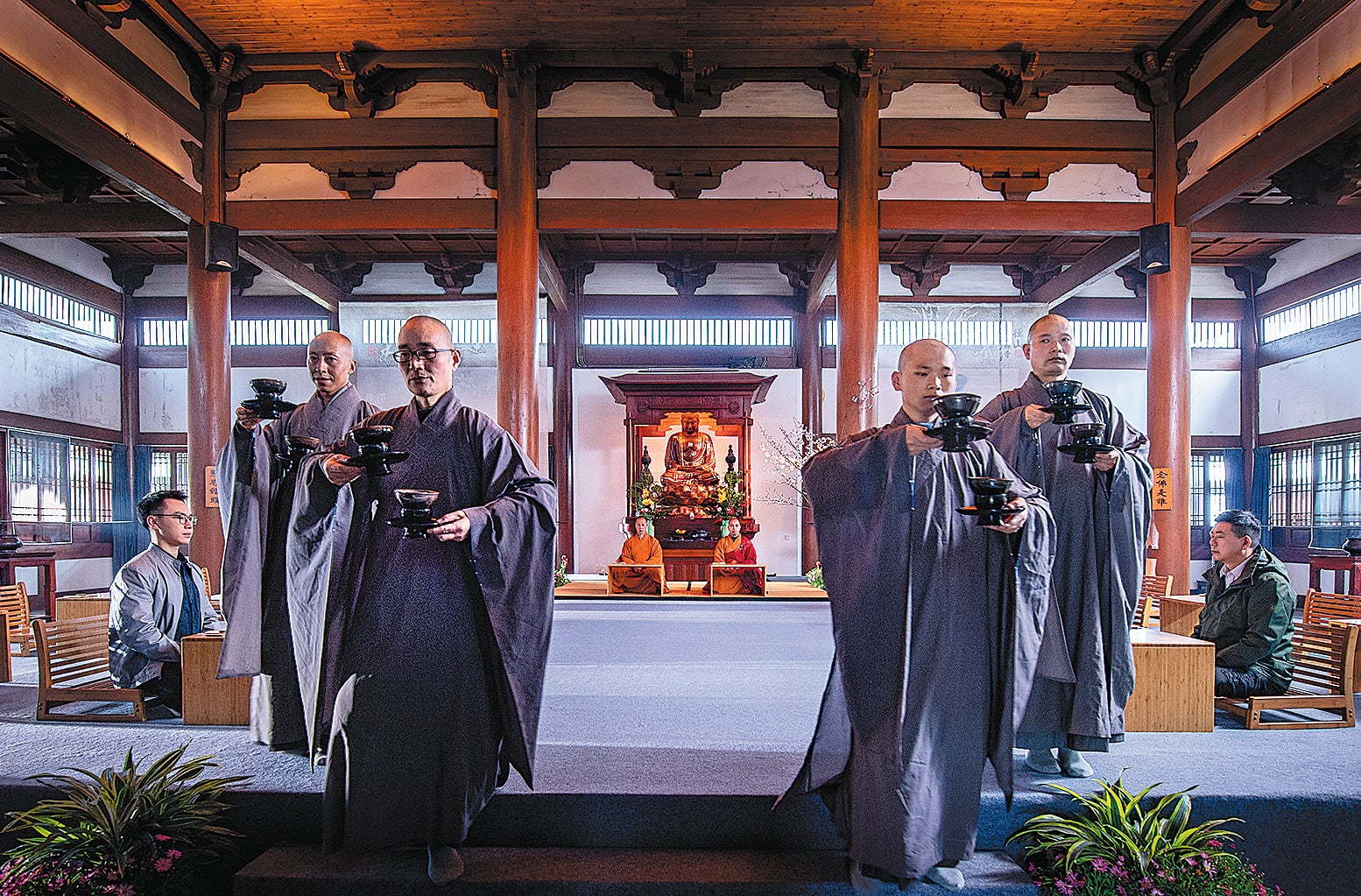Where tea is a state of mind
THE ARTICLES ON THESE PAGES ARE PRODUCED BY CHINA DAILY, WHICH TAKES SOLE RESPONSIBILITY FOR THE CONTENTS

Back in the mid-750s AD, when revered “tea saint” Lu Yu, was in his twenties, he traversed the expanse of China, particularly the Huaihe River Basin and the lower reaches of the Yangtze River, researching all there was to know about tea.
Eventually, he completed The Classic of Tea, the first compendium of the drink in China, outlining the knowledge he garnered, from the explanation of tea, its tools and vessels, to its production, brewing and customs.
Some might say that taste is subjective, but Lu decided on a set of criteria for the most superior variety of tea – those resembling bamboo shoots and having a purple hue.
This type of tea was named Zisun, literally meaning “purple bamboo shoot”, and produced as a tribute exclusive to emperors. It is said that it was Lu who recommended it to the imperial court of the Tang Dynasty (618-907).
China’s first imperial tea factory was then established to produce Zisun Tea in Changxing county, Zhejiang province’s Huzhou, the city being deemed by Lu as the best tea-producing area in what is today’s northern Zhejiang and southern Jiangsu province.
Before setting out on his journey to research tea, Lu had led an unusual life. Abandoned as an infant in what is today’s Tianmen, Hubei province, he was adopted in the year 733 by Zhiji, a Buddhist abbot, and grew up in the Longgai Temple.
It was there that he first learned to brew tea but, unwilling to live a pious life, he became an actor of comedic characters in his teens. An official later recognised his talent and recommended him to pursue further learning.
When the An Lushan Rebellion broke out in 755, Lu left Central China for the east and started his exploration of tea.
Perhaps his bond with the Zen lifestyle never ended. At Miaoxi Temple in Huzhou, he met Jiaoran, a monk poet who enlightened him in the philosophy of tea drinking.
“Served as a beverage, tea is best suited to those who uphold discipline and moral conduct,” Lu wrote in The Classic of Tea, emphasising the tea preparation and ritual, which helped elevate tea into a symbol of refinement and social status.
An example among tea–drinking rituals is the Jingshan tea ceremony, a solemn ceremony hosted at the Jingshan Temple in Hangzhou, Zhejiang province, where Lu visited during his journey.
Though it is recorded that the temple’s founder offered tea as a sacrifice to Buddha in the mid-Tang Dynasty, the ceremony became a regular practice during the Song Dynasty (960-1279), in which tea was relished by Buddhist monks and guests, the majority of whom were literati and bureaucrats.
Here, tea became a medium for meditation and enlightenment, which involved more than 10 formal procedures, including welcoming the guests, burning incense and paying tribute, as well as making and drinking the tea.
“The ceremony reflected the refined lifestyle of literati and bureaucrats from the Song Dynasty,” says Yanping, a Buddhist monk at the temple and an inheritor of the art form.
“The senior monks of Jingshan Temple at the time wanted people to feel their own existence through relishing a cup of tea.”
Contrary to contemporary tea drinking, habits of consuming a considerable amount within a short time, Yanping says that Song Dynasty attendees would usually savour one small cup in two hours in silence.
“What contrasts with facing a single object for two hours is the richness and nobility of the mind. Although the tea drinkers may live in a busy world, their minds are free and at ease. This state of mind is the most beautiful thing about the ceremony,” Yanping adds.
Last year, traditional tea-processing techniques and associated social practices in China were inscribed on Unesco’s Representative List of Intangible Cultural Heritage of Humanity. Both the Zisun tea-making technique and Jingshan tea ceremony were included.
While tea brought these areas cultural depth and economic prosperity, the legacy of the “tea saint” is never forgotten. Across the regions Lu travelled, his statues can often be seen and his stories are still being told.
Subscribe to Independent Premium to bookmark this article
Want to bookmark your favourite articles and stories to read or reference later? Start your Independent Premium subscription today.